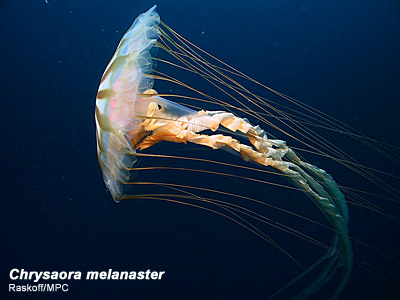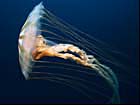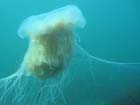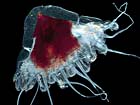Cnidarians - Jellyfish & Kin

The Scyphozoans or "true jellyfish" group contains most of the larger members of the zooplankton community. They can be as small as only a few mm in diameter, while the bells on some jelly-fish are close to 1 m across with feeding arms and tentacles several meters long. This explains why they are only group of zooplankon known to the public. They ococur through all ocean depths and habitats, usually with species-specific depth ranges.
Associated with their larger size, and role ar predators on larger zooplankton and smaller fish, the stinging cells in this group can produce a nasty string to humans if handled. Although relatively low in abundance compared to smaller zooplankton, because of their larger size they are noticed when present. Sometimes they dominate the catch of nets normally targetting fish! In some locations the is an inverse raltionship between fish and jellyfish, but it remains unclear if this is a cause or affect relationship.
Surface-dwelling species undergo a life cycle where a small bottom-dwelling stage buds off a "larval" jellyfish known as an ephyra. At the ephyra grows it assumes the adult form, which eventually release either eggs or sperm. The fertilized eggs then attach to the bottom to complete the cycle. Some species, particularly those living in the ocean's midwaters, have eliminated the benthic phase, and incubate embyros that are released as minature adults.
We know little for sure about how long most species live in the Arctic. The larger species might live several years, while the smaller species may have relatively short lives in the plankton. There are only 6 species of scyphozoans known to exist in the arctic.
Page Author: Russ Hopcroft
Created: Aug 20, 2010






